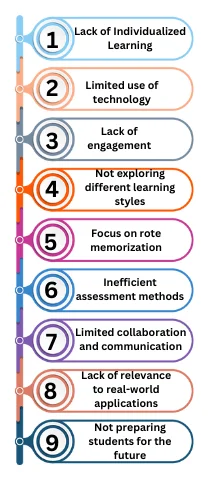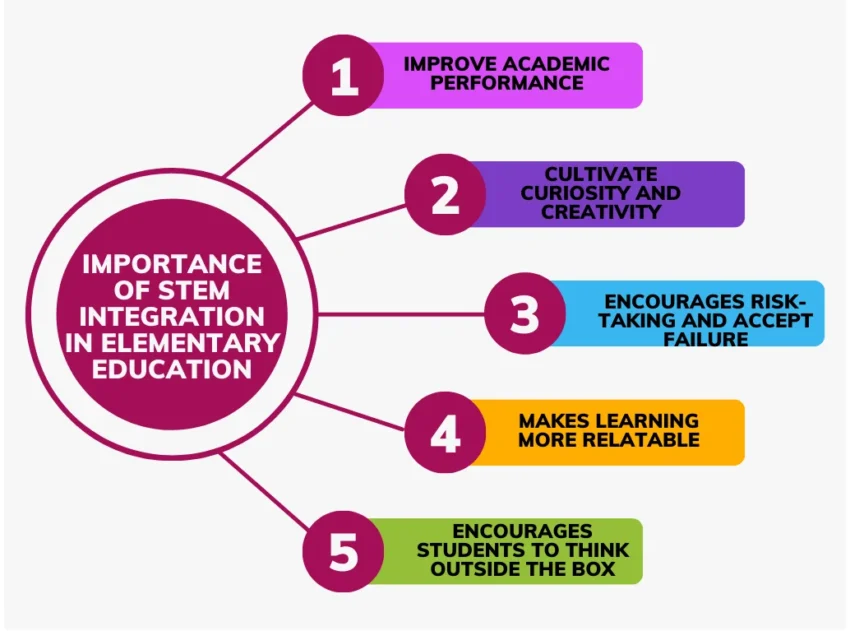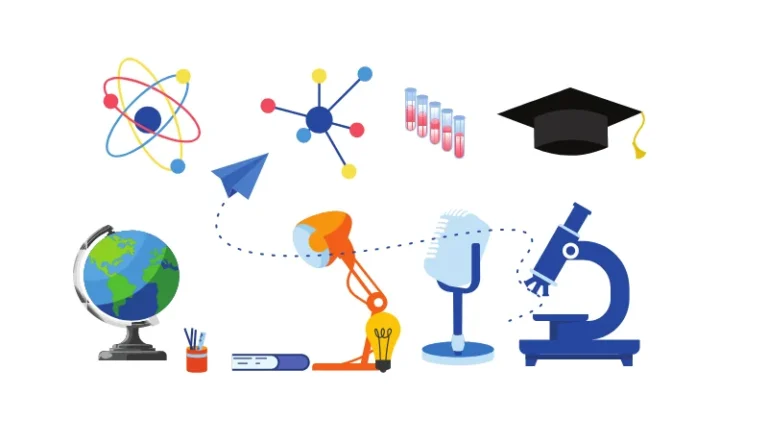The U.S. Department of Commerce quoted that STEM occupations are rising at a rate of 17% compared to other occupations at 9.8%. STEM Integration into elementary education prepares students for the future job market. It prepares students with essential skills and knowledge for the evolving workforce.
Integration of STEM games in elementary education emerged as a game-changer. It revolutionized the traditional classroom dynamics. This integration makes an innovative environment where every student can participate and learn.
Researchers observed a 31% improvement in STEM subjects by integrating STEM games in the classroom. Diverse learning styles of STEM games surpass typical barriers to learning. It will help students learn practical skills to tackle real-life challenges.
Background of Case Study
The case study focused on an elementary school in a suburban area. The school implemented STEM games into its curriculum as part of a pilot program. The school recognized the benefits of exposing students to these subjects early. The school partnered with a STEM education company. It helps to provide resources, training, and support for the teachers.
Implementation into the Elementary Education
The program was introduced in two phases, starting with students in grades 1-3. Later, it expanded to include grades 4-5 the following year. Each classroom dedicated specific periods to playing STEM games. The school encouraged the teachers to include these activities in their lesson plans. The school provided students access to various online STEM games through the computer lab.
Impact of STEM Integration on Students and Teachers of Elementary School
Integration of STEM games in the classroom influenced both students and teachers. It sparked interest in daunting or uninteresting subjects for students. They could apply the knowledge they learned in a fun and interactive way. STEM integration gave them a deeper understanding of the concepts.
The STEM games provided teachers with innovative ways to teach challenging subjects. They reported increased student engagement, motivation, and critical thinking skills. Training and support provided by the STEM company helped teachers improve their confidence. They felt more capable of teaching these subjects.
Challenges in Traditional Teaching Methods
Traditional teaching methods have several challenges:

- Lack of Individualized Learning: Teachers often use a one-size-fits-all approach in traditional teaching. All students receive the same material, regardless of their learning styles or outcomes. This can lead to some students feeling left behind or needing clarification.
- Limited use of technology: Traditional teaching methods rely on textbooks and lecture style. They do not incorporate technology. This can limit students’students’ exposure to new and innovative learning tools and methods.
- Lack of engagement: In traditional teaching methods, students are passive recipients of information. They don’t engage and take part in the learning process. This can lead to disinterest in the study.
- Not exploring different learning styles: Every student has a different way of learning or processing data. Traditional teaching methods may only use some of these different learning styles. So, it is difficult for some students to grasp and keep the material.
- Focus on rote memorization: Many traditional teaching methods focus only on the rote memorization of facts. This can hinder students’ ability to think creatively and critically.
- Inefficient assessment methods: Traditional teaching methods rely on tests or exams for assessment. Such inaccurate assessment leads to unjustified stress and pressure.
- Limited collaboration and communication: Students are often isolated at their desks. It limits opportunities for collaboration and communication with peers. This can hinder the development of important social skills.
- Lack of relevance to real-world applications: Traditional teaching methods don’t connect learning to real-world applications. It is difficult for students to see the practicality and importance of their learning.
- Not preparing students for the future: Traditional teaching methods may not equip students with the vital skills for the future job market. They may also not provide the knowledge necessary for it. These include adaptability, technology literacy, and critical thinking.
Why is STEM Integration in Elementary Education Important?
Integrating STEM in elementary education is important in several ways:
Improves Academic Performance
STEM integration in elementary education can have a positive impact on academic performance. Through STEM inclusion, students can witness the real-world application of these subjects. It will improve their deeper understanding of the subject, improving academic performance.
Cultivates Curiosity and Creativity
STEM integration also helps to cultivate curiosity and creativity in students. Such hands-on, inquiry-based activities encourage questioning and exploration in students. This learning environment allows students to ask creative questions. They can explore more by using their imagination.
Encourages Risk-taking and Accept Failure
STEM integration encourages students to take risks and accept failure. It’s a part of the learning process. Students can try new things and learn from their mistakes. It helps to develop persistence, which is essential for success in any field.
Makes Learning more Relatable
STEM in elementary education helps to make learning more relevant for students. By connecting STEM, students can see the practical application of their learning. STEM can provide a deeper understanding of how these subjects impact our daily lives.
Encourages students to think outside the box
STEM integration in elementary education encourages students to think outside the box. It allows students to approach problems from many perspectives. By incorporating STEM subject areas, students can make connections between unrelated topics. This type of thinking is essential for innovation and creativity.

STEM games in Elementary Education can Bridge the Gap Between Theory and Practice!
STEM Games offer a platform to reinforce STEM concepts and problem-solving skills. STEM games change the perspective of students to observe their surroundings. These games encourage them to do something creative.
STEM curriculum, integrated with gaming, teaches academic skills. It also nurtures social-emotional competencies and real-world application of knowledge. STEM education inspires and nurtures a passion for innovation in children.
STEM Games into Elementary Education Curriculum!
STEM games in elementary education curriculum can engage students and develop logical reasoning. Here are some ways to do it:
Use Free STEM Resources
Use free STEM teaching resources and classroom activities for students aged 5-11. These resources often include lesson plans, handouts, and film clips. Such resources make learning interactive and fun for students.
Curriculum Integration
Integrate STEM concepts into your existing curriculum. Identify opportunities within science and math subjects to introduce STEM elements. STEM integration makes the learning experience more comprehensive.
Diversity and Gender Equality
Be mindful of promoting diversity and gender equality in STEM education. Encourage all students, regardless of gender, to participate in STEM activities. This will help in breaking gender stereotypes.
Teacher Training
Prepare teachers to teach STEM topics to the students. Professional development opportunities and training can empower tutors to deliver engaging STEM lessons.
Balance with Other Subjects
Ensure a balanced curriculum that includes liberal arts and other subjects. Strive for a well-rounded education that prepares students for various career paths.






